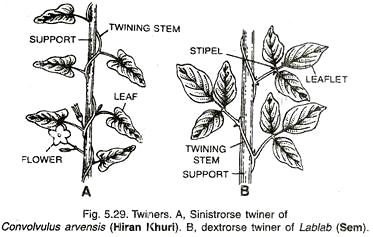The overall reactions of photosynthesis may be summarized by the equation:
Studies by many individuals over the past 300 years have led to our present understanding of this process.
One of the first studies, by Jan Baptista van Helmont (Dutch, 1577-1640), was published in 1648 after his death.
Van Helmont planted a 5-lb willow shoot in a large pot containing 200 lb of soil. The plant was regularly watered over a 5-year period and was then carefully removed and weighed.
The willow tree was found to weigh almost 170 lb, but the original soil weighed only a few ounces less than the original 200 lb.
Van Helmont concluded that the increase in weight of the willow tree was due primarily to the addition of water, for he was not aware of the role played by gases in the air in the growth of the plant. In 1727, Stephen Hales proposed that part of a plant’s nourishment came from the air and that light was involved in the process. Today, we also recognize that the small quantity of material removed from the soil included minerals, nitrogen, phosphate, and calcium salts.
Joseph Priestley (English, 1733-1804) was the first to show that plants exchange gases with the atmosphere. In particular, Priestley found that oxygen was evolved by plants during photosynthesis. Late in the eighteenth century, Jan Ingenhousz (Dutch, 1730- 1799) showed that oxygen was produced by the green parts of plants when exposed to light.
Furthermore, he observed that the amount of oxygen produced varied according to the amount of light to which the plant was exposed. In 1804, Nicholas de Saussure (Swiss, 1767-1845) found that the increase in the carbon content of plants resulted from the accumulation of carbon from carbon dioxide in the air. De Saussure also showed that leaves respire in darkness, that is, they take in oxygen and release carbon dioxide.
The studies of Julius Sachs in the mid-nineteenth century show that chlorophyll was confined to the chloroplasts and was not distributed throughout the plant cell. He also showed that sunlight caused chloroplasts to absorb carbon dioxide and that chlorophyll is formed in chloroplasts only in the presence of light.
Sachs also noted that one of the products of photosynthesis was starch. It was not until 1918 that Wilstatter and Stoll isolated and characterized the green pigments chlorophylls a and b. On the basis of these early findings, the reactions of photosynthesis were described by the equation
However, photosynthesis is not simply the fusing of carbon dioxide and water molecules through the use of light energy. Instead, two complex series of chemical reactions are involved. One set of reactions, called the photochemical or light reactions, occurs in the lamellae of the chloroplasts. In these reactions, light energy is used to form ATP and water molecules are split, releasing oxygen and hydrogen.
The hydrogen is used in the reduction of NADP + and is not evolved as a gas. The second set of reactions, called the synthetic or dark reactions, occurs in the stroma of the chloroplast, and although these reactions do not require light, they do depend on the availability of ATP and NADPH from the photochemical reactions to reduce the carbon dioxide thereby forming sugars.

